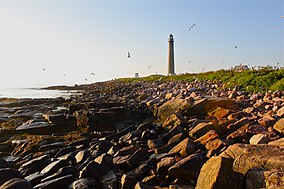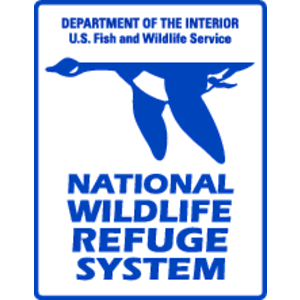
The National Wildlife Refuge System (NWRS) is a system of protected areas of the United States managed by the United States Fish and Wildlife Service (FWS), an agency within the Department of the Interior. The National Wildlife Refuge System is the system of public lands and waters set aside to conserve America's fish, wildlife, and plants. Since President Theodore Roosevelt designated Florida's Pelican Island National Wildlife Refuge as the first wildlife refuge in 1903, the system has grown to over 568 national wildlife refuges and 38 wetland management districts encompassing about 859,000,000 acres (3,476,200 km2).

The Pinckney Island National Wildlife Refuge is a 4,053-acre (16 km2) National Wildlife Refuge located in Beaufort County, South Carolina between the mainland and Hilton Head Island. Named after Major General Charles Cotesworth Pinckney, it was established to provide a nature and forest preserve for aesthetic and conservation purposes.

The Seney National Wildlife Refuge is a managed wetland in Schoolcraft County in the U.S. state of Michigan. It has an area of 95,212 acres (385 km2). It is bordered by M-28 and M-77. The nearest town of any size is Seney, Michigan. The refuge contains the Seney Wilderness Area and the Strangmoor Bog National Natural Landmark within its boundaries.
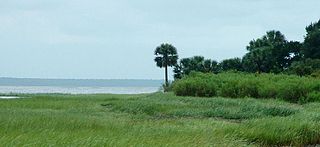
St. Marks National Wildlife Refuge is a wintering ground for migratory birds in Florida. Established in 1931, it encompasses more than 83,000 acres (336 km2) spread between Wakulla, Jefferson, and Taylor Counties in the state of Florida.
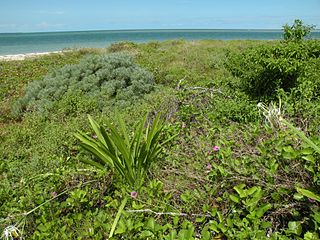
The Key West National Wildlife Refuge is a 189,497 acre (766.867 km2) National Wildlife Refuge located in Monroe County, Florida, between Key West, Florida and the Dry Tortugas. Only 2,019 acres (8.171 km2) of land are above sea level, on several keys within the refuge. These keys are unpopulated and are also designated as Wilderness within the Florida Keys Wilderness. The refuge was established to provide a preserve and breeding ground for native birds and other wildlife as well as to provide habitat and protection for endangered and threatened fish, wildlife, plants and migratory birds.

The Yukon Delta National Wildlife Refuge is a United States National Wildlife Refuge covering about 19.16 million acres (77,500 km2) in southwestern Alaska. It is the second-largest National Wildlife Refuge in the country, only slightly smaller than the Arctic National Wildlife Refuge. It is a coastal plain extending to the Bering Sea, covering the delta created by the Yukon and Kuskokwim rivers. The delta includes extensive wetlands near sea level that are often inundated by Bering Sea tides. It is bordered on the east by Wood-Tikchik State Park, the largest state park in the United States. The refuge is administered from offices in Bethel.

The Archie Carr National Wildlife Refuge is part of the United States National Wildlife Refuge (NWR) System, located along a twenty-mile (30 km) section of coastline from Melbourne Beach to Wabasso Beach, Florida, along State Road A1A. The 900 acre (3.6 km2) refuge was established in 1991, to protect the loggerhead and green sea turtles.

The Lake Wales Ridge National Wildlife Refuge is part of the United States National Wildlife Refuge (NWR) System, located in four separated areas on the Lake Wales Ridge east of US 27 between Davenport and Sebring in Florida. The 1,194 acre (4.8 km2) refuge was established in 1990, to protect a host of plants and animals. It is also the first to be designated primarily for the preservation of endangered plants, and is not open to the general public. It contains a high proportion of remaining Florida scrub habitat. It is administered as part of the Merritt Island National Wildlife Refuge.

The Passage Key National Wildlife Refuge is part of the United States National Wildlife Refuge (NWR) System, located offshore from St. Petersburg. The 64-acre (0.26 km2) refuge was established in 1905 by President Theodore Roosevelt to preserve nesting colonies of native seabirds and wading birds. The Passage Key Wilderness Area is part of the refuge, and consists of 36.37 acres (0.1472 km2) of its total area. It was established in 1970, to protect native birds and serve as a breeding ground for them.

The Pinellas National Wildlife Refuge is part of the United States National Wildlife Refuge (NWR) System, located offshore from mainland St. Petersburg, Florida, and only accessible by boat. The 394-acre (1.59 km2) refuge was established in 1951, to act as a breeding ground for colonial bird species. Islands within the refuge include Indian, Tarpon, Mule, and Jackass Keys, and all are within the St. Petersburg city limits.

Seal Island National Wildlife Refuge is a 1-mile long (1.6 km) island off the coast of Maine, United States near Matinicus Island that is part of the Maine Coastal Islands National Wildlife Refuge. During any given summer season, over 100 species of birds are observed by researchers on the island. It is home to colonies of many types of seabirds, including Atlantic puffins, double-crested cormorants, razorbills, Leach's storm petrels, eiders, and black guillemots. Seal Island is the last refuge for the dwindling great cormorant population in the Gulf of Maine, with 35 pairs in 2018. A policy of eliminating predatory gulls preceded the recolonization of the island by a large mixed band of Arctic terns and common terns.
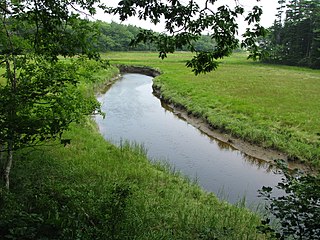
The Rachel Carson National Wildlife Refuge is a 9,125-acre (37 km2) National Wildlife Refuge made up of several parcels of land along 50 miles (80 km) of Maine's southern coast. Created in 1966, it is named for environmentalist and author Rachel Carson, whose book Silent Spring raised public awareness of the effects of DDT on migratory songbirds, and of other environmental issues.
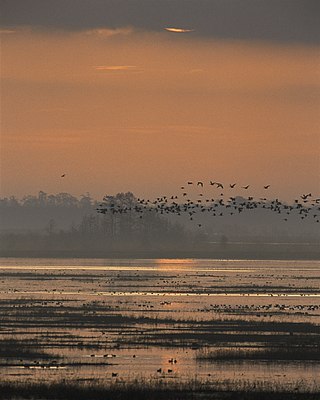
Lacassine National Wildlife Refuge is located in Cameron and Evangeline Parishes in southwestern Louisiana, was established in 1937 by Executive Order No. 7780 as "a refuge and breeding ground for migratory birds and other wildlife." The refuge is nearly 35,000 acres (140 km2) in size, including 653 acres (2.64 km2) leased from the Cameron Parish School Board. The Evangeline Parish unit is called Duralde Prairie and is currently being developed. It is located south of the city of Eunice.

Libby Island Light is a lighthouse on Libby Island, marking the mouth of Machias Bay, in Machiasport, Maine. The light station was established in 1817 and is an active aid to navigation; the present granite tower was built in 1823 and improved in 1848. Libby Island Light was listed on the National Register of Historic Places as Libby Island Light Station on June 18, 1976.

Petit Manan Light is a lighthouse on Petit Manan Island, Maine. The island is at the end of a series of ledges extending out from Petit Manan Point, between Dyer Bay and Pigeon Hill Bay, that projects into the Gulf of Maine.

Cross Island National Wildlife Refuge is a National Wildlife Refuge in the state of Maine. It is one of the five refuges that together make up the Maine Coastal Islands National Wildlife Refuge, along with Petit Manan, Franklin Island, Seal Island, and Pond Island.
Franklin Island National Wildlife Refuge is a National Wildlife Refuge on Franklin Island outside Muscongus Bay in the state of Maine, United States. It is one of the five refuges that together make up the Maine Coastal Islands National Wildlife Refuge, along with Petit Manan, Cross Island, Seal Island, and Pond Island.

Pond Island National Wildlife Refuge is a National Wildlife Refuge in the state of Maine, United States. It is one of the five refuges that together make up the Maine Coastal Islands National Wildlife Refuge, along with Petit Manan, Cross Island, Franklin Island, and Seal Island. Pond Island NWR is an island in the mouth of the Kennebec River adjacent to Popham Beach.
Maine Coastal Islands National Wildlife Refuge contains more than 50 offshore islands and four coastal parcels, totaling more than 8,100 acres. The complex spans more than 250 miles (400 km) of Maine coastline and includes five national wildlife refuges—Petit Manan, Cross Island, Franklin Island, Seal Island, and Pond Island. The U.S. Fish and Wildlife Service manages the refuge complex as part of the National Wildlife Refuge System.

Glenn Martin National Wildlife Refuge includes the northern half of Smith Island, which lies 11 miles (18 km) west of Crisfield, Maryland, and Watts Island, which is located between the eastern shore of Virginia and Tangier Island. Both islands are situated in the lower Chesapeake Bay.
